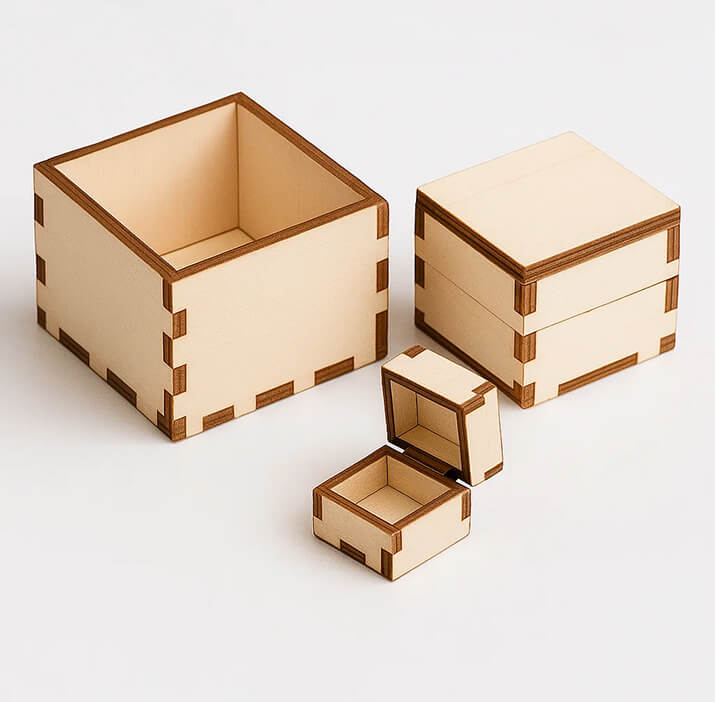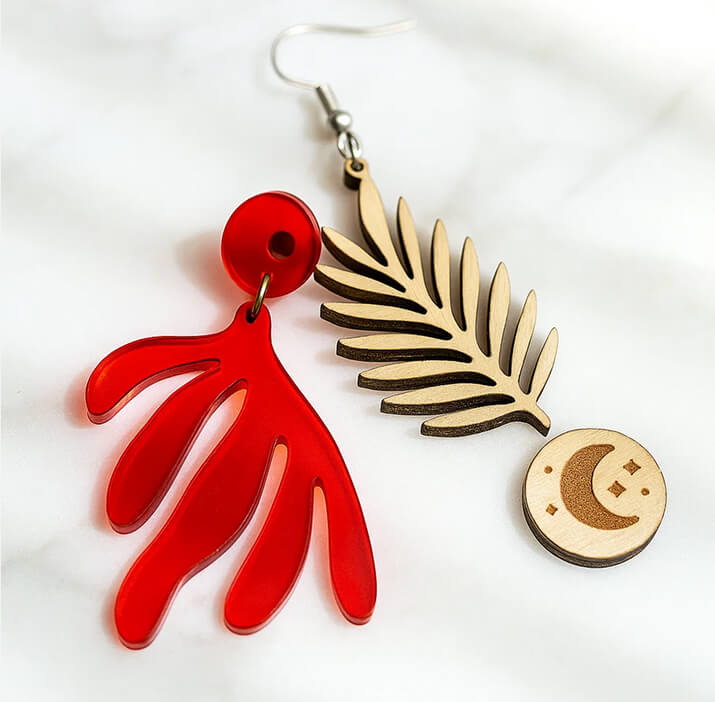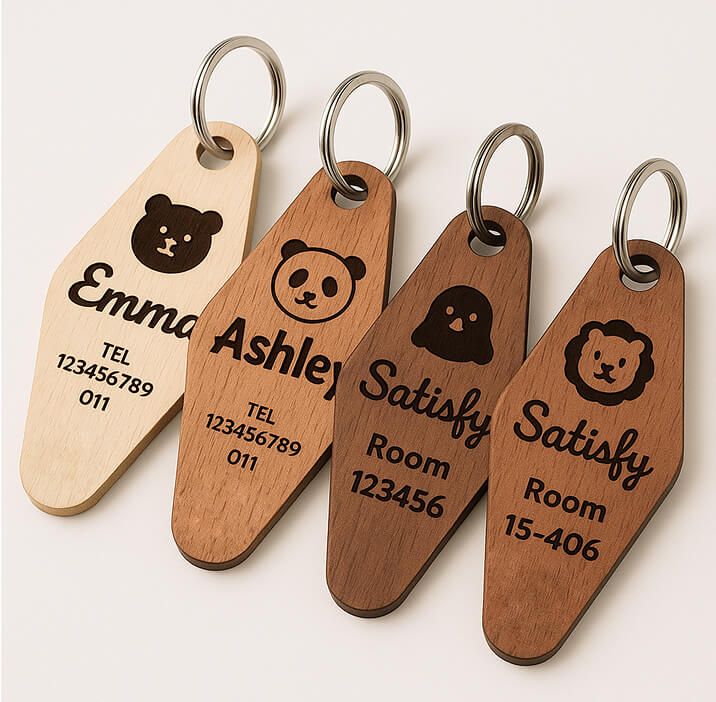![[Laser cut and engrave] Christmas Stocking Countdown Calendar](https://image-res.xtool.com/ali-res/community/making/90a87568-cfc0-422b-a256-859715759757.png?x-oss-process=image/resize,w_1200,h_900,limit_0/interlace,1/format,webp/auto-orient,1)
Christmas Stocking Countdown Calendar

Information
Let the Santa Gnome guide the countdown to Christmas Day! #xToolChristmasgift
Instruction
Step1
 Step One: Place your 3 mm wood into the M1. I have my honeycomb placed on the highest level and I have my air assist on while cutting and scoring this project. I place the magnets on the four corners to help level out the wood if it has slight warping. It also helps assist keeping the board stationary if I need to recut the item (i.e. if I needed to increase power on my settings to cut all the way through).
Step One: Place your 3 mm wood into the M1. I have my honeycomb placed on the highest level and I have my air assist on while cutting and scoring this project. I place the magnets on the four corners to help level out the wood if it has slight warping. It also helps assist keeping the board stationary if I need to recut the item (i.e. if I needed to increase power on my settings to cut all the way through).
The settings on all of the layers are as follows:
Cuts: Power 90, speed 5, one pass
Scoring: Power 90, speed 50, one pass
Step Two: Cut out all layers of the project. Add the attached file that I created to your canvas. I have the file separated onto four canvases. After the file is uploaded look at the bottom left corner. You will see "Canvas 1, Canvas 2, Canvas 3 and Canvas 4". These are broken down into the layers needed. On canvas 4 all of the layers are there and numbered in order of how to glue them together. You will need to cut the pieces accordingly depending on the size of wood that you are using. I delete the parts of the design that I am not able to fit/cut on the wood I have selected from my canvas (do not delete them from canvas 4). Then I go to canvas 4 and copy the piece that I need and paste it back into canvas 1. Keep repeating this process until all 7 layers of the project have been cut and scored.
Tip: Learn how to use the "group" function in the upper toolbar. As an example: you do not have to delete the canvas numbers and back layer as the settings are set so they will not show up. If you would like to delete them, then highlight the canvas and select "ungroup" from the top control panel (this will separate each part of the file), then highlight and delete the parts you would like to remove. To regroup the layer you will need to highlight all of the pieces of the layer and select "group". This allows you to move every part of the layer as one piece.

Canvas 1:
Includes the 1) back layer of the entire project 2) the first layer of steps - sandwiched between the back layer and the scored front layer 3) The front layer of the three items- this will be the scored and decorated piece.
Canvas 2:
Includes layer 4) the steps of stockings 10-17 and layer 5) the scored stockings 10-17
Canvas 3:
Includes layer 6) the steps of stockings 18-25 and layer 7) the scored stocking 18-25.
Canvas 4:
Includes all of the layers of the project so you can copy and paste them as needed. Tip: keep all the of files on canvas 4 so you have them in one place. Delete the layers as needed from canvases 1-3 to fit onto the wood piece you have placed in your machine. Then go back to canvas 4 to copy and paste the layers you need to place back into your design area for cutting.
Once all of the layers have been cut we can move on to painting/dyeing the layers.
Step Three: Dye the layers of wood. For the first portion you will use wood dye to stain the wood. The dye makes it so you can still see the scoring on the wood. Paint is too thick and would cover the engraving. I used Keda dye and was happy with the results. Just follow the directions on the packaging to get the desired hue (more dye powder=richer, darker color). I store my mixed Keda dye in glass dropper bottles that I can use for future projects.


I use a small flat paintbrush to brush on the dye. The glass bottles are what I store the unused portion in. The stars are cutout and have a peekaboo effect to the dyed layer behind it. I dyed the layers as follows:
Layer 1: front and back dyed green
Layer 2: green
Layer 3 (scored stockings 1-9): red
Layer 4: red
Layer 5: (scored stockings 10-17): green
Layer 6: green
Layer 7 (scored stockings 18-25): red

After the boards have been stained and are dry you can complete the painting portion. For this I had to use a paint pen as the areas are very fine and detailed. The scoring of the wood helps to keep the paint in place. Warning: Not for the faint of heart lol. This part was tedious but I felt that it added a lot to the final look. I used this Trio art paint pen I found on Amazon and detailed little areas of each stocking, the numbers on the stockings and the Christmas song words.

 My hands were cramping after, but it was worth it :)
My hands were cramping after, but it was worth it :)
Once all the paint has dried we are going to glue all of the layers together. Glue them separately and let dry so the pieces do not shift. Glue layers 1-3 together and clamp. Glue and clamp together layers 4 & 5. Then glue and clamp layers 6 & 7. Once dry then glue all three layers together and clamp so the wood is flat as it may have slight warping after dyeing.
I used small red clamps and Gorilla Glue super glue to get the job done.

Woo hoo!! All of your layers are good to go.
Now we are going to make the Santa gnome to go down the chimney steps. Open the attached file labeled Santa gnome in XCS and cut and engrave the little fella. Be careful not to change the file size as the bottom is what fits into the project steps. Be sure to use the same 3mm wood so it fits into the slots. I hand painted my gnome with paint pens.

Congrats! You now have an adorable Christmas Countdown Calendar.
Step2
I added this as a separate step because I wanted to show the process of how you can turn an image into an svg so XCS can read the file. It will show you how to use some of the useful features in XCS.
I used a stock Santa from another program I have and took a screen shot of it (on Mac use Shift+Command+5).
There are many free online SVG converters but my go to is www.picsvg.com
Go to www.picsvg.com. Click on Upload Photo and upload the screen shot of the gnome. Set to "internal 3" and it will give a preview on the right side of what it will look like converted to an SVG. Click the download button. You now have an SVG that the M1 can read.
Now upload the SVG to XCS. In XCS you will "group" the file together so you can move it freely, be sure all parts of the file are selected. Set the settings to Score at speed of 90, power 50.
Highlight the image/SVG then click "outline" in the top toolbar. Set at the distance you like, for this project I selected 2. You now have an out line to the score SVG. The outline gives the machine a path to cut around the scored gnome. Create a rectangle in XCS and align it to the bottom of the outline of the gnome. Highlight the outline and the rectangle and click "combine" then it will give a dropdown for you to click "unite". This joins the two objects together as one. Input the settings to Cut Power 90, speed 5, one pass.
Excellent work! You now have your gnome :)




